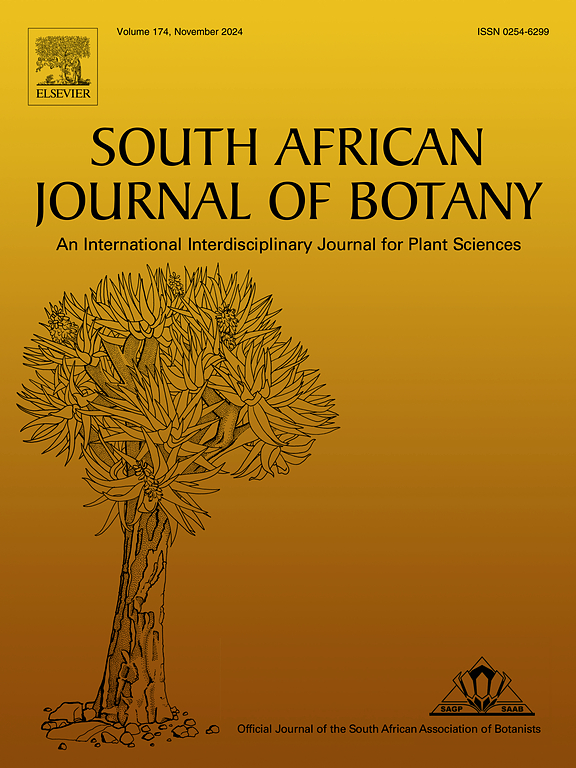Essential oils from South African indigenous plants: Extraction techniques, phytochemistry, biological activities and applications
IF 2.7
3区 生物学
Q2 PLANT SCIENCES
引用次数: 0
Abstract
Essential oils (EOs) are concentrated, volatile liquids derived from various plant parts, valued for their aromatic properties and widespread use in food flavoring, perfumery, and other applications. Despite substantial global advancements in EO research, limited attention has been given to EOs derived from South African indigenous plants. This review synthesizes existing literature, identifies research gaps, and highlights prospects in this field. Data were sourced from peer-reviewed articles and theses available in online repositories. The review focuses on EOs extracted from 100 South African indigenous plants, predominantly within the Asteraceae family. Hydro-distillation is identified as the primary extraction method; however, variations in EO composition and bioactivity suggest the need to explore alternative techniques. Phytochemical analyzes identified terpenes as the dominant constituents, with pinene and caryophyllene being the most prevalent monoterpene and sesquiterpene, respectively. Despite the discovery of bioactive compounds with commercial potential, significant gaps remain in biological and toxicological evaluations. EOs from these plants show promising applications in decay management and shelf-life extension of fruits and vegetables, emphasizing their value in postharvest technologies. This review highlights the economic potential of developing a sustainable indigenous EO industry in South Africa, underscoring the need for government regulation to support sustainable harvesting practices and ensure product quality. Advancing research on South African indigenous EOs is critical to unlocking their commercial and ecological benefits.
南非本土植物精油:提取技术、植物化学、生物活性和应用
精油(EOs)是从各种植物部位提取的浓缩挥发性液体,因其芳香特性而受到重视,并广泛用于食品调味、香水和其他应用。尽管全球在植物提取物研究方面取得了重大进展,但对来自南非本土植物的植物提取物的关注有限。本综述综合了现有文献,确定了研究空白,并强调了该领域的前景。数据来源于在线存储库中同行评审的文章和论文。这篇综述的重点是从100种主要属于菊科的南非本土植物中提取的EOs。确定氢蒸馏为主要提取方法;然而,EO组成和生物活性的变化表明需要探索替代技术。植物化学分析发现萜烯是主要成分,蒎烯和石竹烯分别是最常见的单萜和倍半萜。尽管发现了具有商业潜力的生物活性化合物,但在生物学和毒理学评估方面仍存在重大差距。从这些植物中提取的EOs在水果和蔬菜的腐烂管理和保质期延长方面显示出良好的应用前景,强调了它们在采后技术中的价值。这篇综述强调了在南非发展可持续的土著生态作物产业的经济潜力,强调了政府监管支持可持续收获做法和确保产品质量的必要性。推进对南非土著生态系统的研究对于释放其商业和生态效益至关重要。
本文章由计算机程序翻译,如有差异,请以英文原文为准。
求助全文
约1分钟内获得全文
求助全文
来源期刊

South African Journal of Botany
生物-植物科学
CiteScore
5.20
自引率
9.70%
发文量
709
审稿时长
61 days
期刊介绍:
The South African Journal of Botany publishes original papers that deal with the classification, biodiversity, morphology, physiology, molecular biology, ecology, biotechnology, ethnobotany and other botanically related aspects of species that are of importance to southern Africa. Manuscripts dealing with significant new findings on other species of the world and general botanical principles will also be considered and are encouraged.
 求助内容:
求助内容: 应助结果提醒方式:
应助结果提醒方式:


